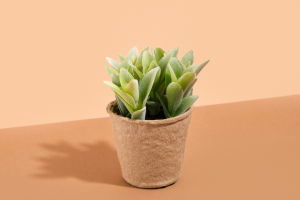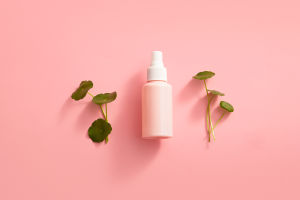Hey Lykkers! Succulents have gained immense popularity as low-maintenance, visually striking plants that can thrive in various environments.
These hardy plants come in a wide range of shapes, sizes, and colors, making them a versatile addition to any home or garden.
What Are Succulents?
Thick, Water-Storing Leaves
Succulents are plants that have adapted to survive in arid environments by storing water in their thick, fleshy leaves, stems, or roots. This characteristic allows them to withstand periods of drought, making them perfect for individuals who might forget to water their plants regularly. The word "succulent" comes from the Latin word sucus, meaning juice or sap, highlighting their ability to retain water.
Diverse Varieties
There are thousands of succulent species, each with its unique appearance. Some popular varieties include aloe vera, jade plants, echeveria, and agave. Whether you're looking for a small, compact plant to place on a windowsill or a larger statement plant for your patio, there's a succulent to suit every taste.
Benefits of Growing Succulents
Low Maintenance
One of the biggest advantages of succulents is their low maintenance requirements. Since they can store water in their leaves, they don’t need to be watered as frequently as other plants. In fact, overwatering can be more harmful to succulents than underwatering. Most varieties thrive with minimal care, making them ideal for busy individuals or those new to plant care.
Air Purification
Succulents are not just beautiful; they also help purify the air. Like other plants, they absorb carbon dioxide and release oxygen, contributing to a healthier indoor environment. Some succulents, such as aloe vera, are particularly known for their air-purifying properties, making them an excellent addition to any home.
Adaptability
Succulents are incredibly versatile and can grow in a variety of settings. Whether placed indoors in a sunny spot or outdoors in a garden, these plants can adapt to different environments. They also come in various sizes, so they can be grown in small containers, hanging baskets, or even as part of a large outdoor landscape.
These are The 25 Best Succulent Plants
Video by Agronomag
How to Care for Succulents
Light Requirements
Succulents love sunlight, but they can also tolerate low light conditions. If you're growing them indoors, place them near a window where they can receive plenty of natural light. For outdoor succulents, make sure they are positioned in an area where they can bask in sunlight for at least six hours a day. Too little light can cause them to stretch and lose their compact shape.
Watering
While succulents are drought-tolerant, they still need occasional watering. The key is to water them deeply but infrequently. Allow the soil to dry out completely between waterings to prevent root rot, which is a common issue with overwatered succulents. During winter months, reduce watering as they enter a dormant phase and require less moisture.
Soil and Drainage
Succulents prefer well-draining soil. A mix of sand, perlite, and regular potting soil works best. The pot should also have drainage holes to prevent excess water from accumulating at the roots, as succulents are prone to root rot if left in standing water.
Creative Ways to Display Succulents
Terrariums
Succulents are perfect for creating miniature gardens in glass terrariums. Their small size and unique shapes make them ideal for layering with sand, rocks, and other decorative elements in enclosed or open terrariums.
Vertical Gardens
For those looking to make a bold statement, succulents can be arranged in vertical planters or frames to create living walls. These vertical gardens not only add greenery to your home but also serve as beautiful works of art.
Succulents are resilient, easy-to-care-for plants that add charm and style to any space. With their wide variety of shapes and sizes, they offer endless possibilities for creative plant displays, whether in a traditional garden, modern apartment, or office. Their ability to thrive in both bright and low-light conditions, combined with minimal watering requirements, makes them the perfect companion for both novice and experienced gardeners.


